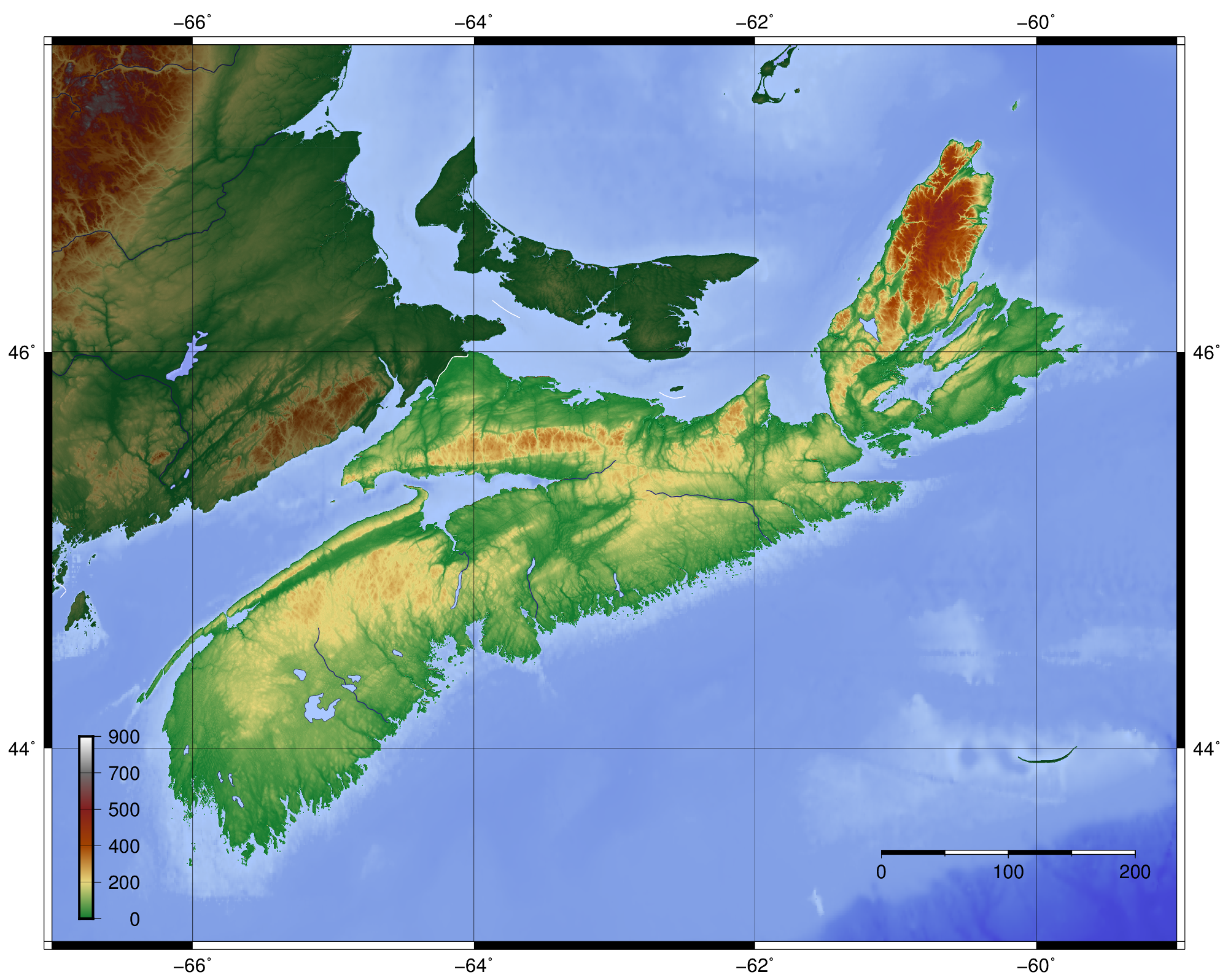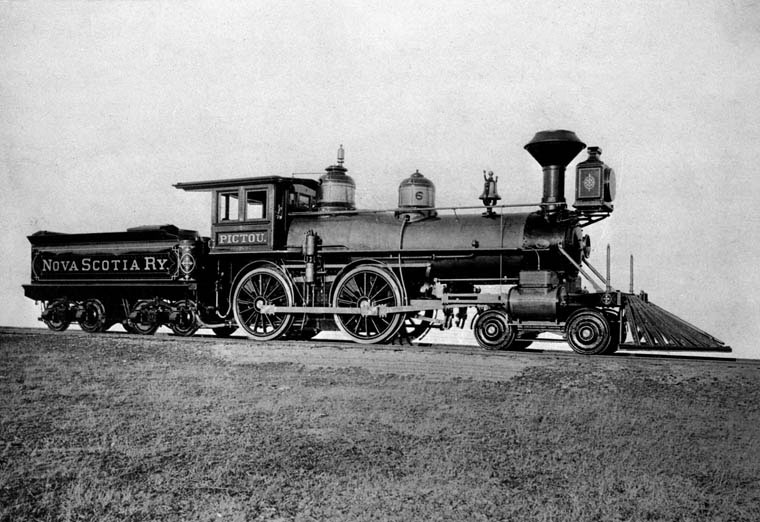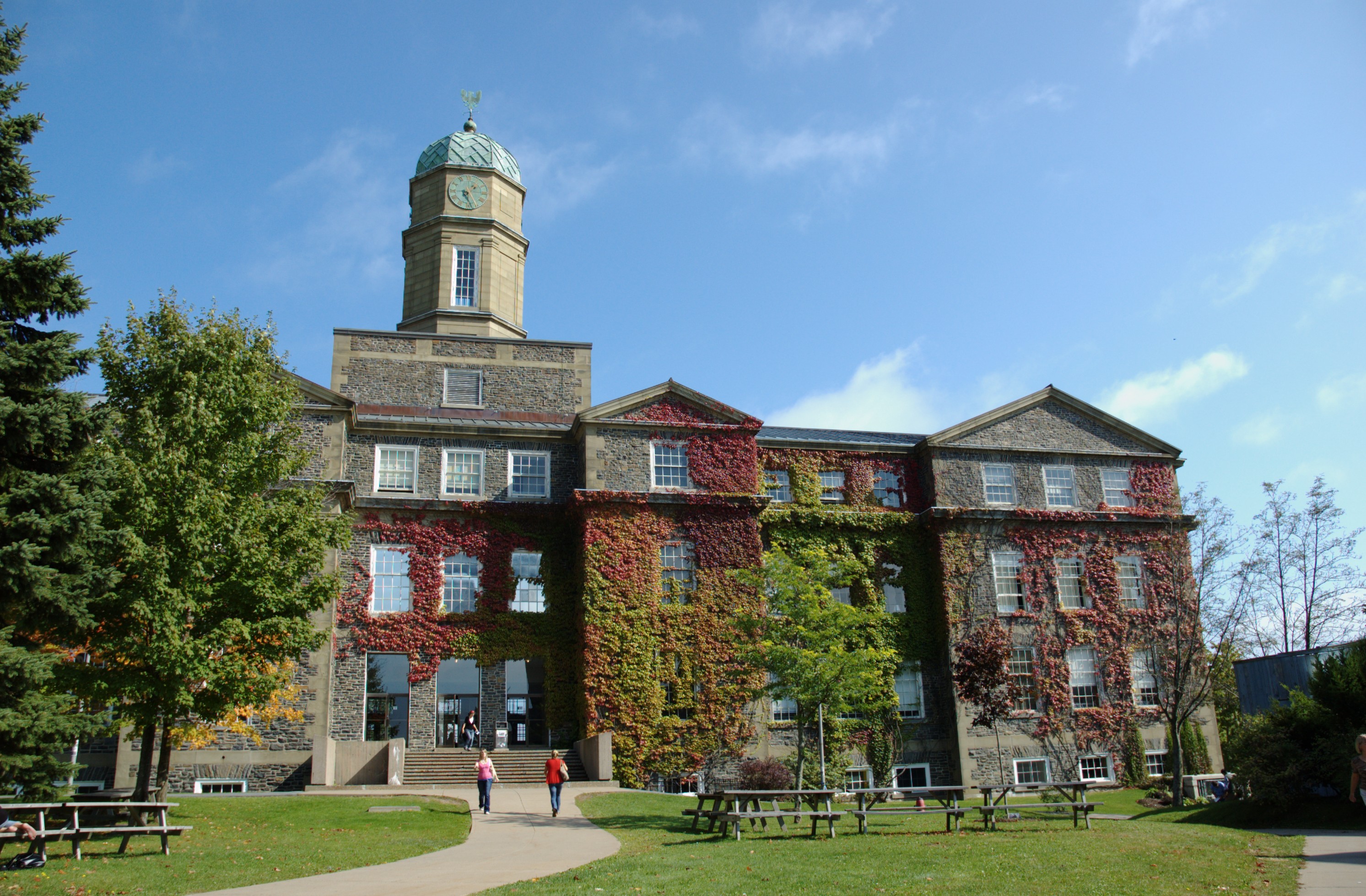|
Elmsdale, Nova Scotia
Elmsdale (2011 population: 3,034) is an unincorporated Canadian village and community located on the boundary of Hants County and Halifax County in Nova Scotia. Geography Specifically, the community is divided by the Shubenacadie River, in the Halifax Regional Municipality. History Elmsdale owes its early growth to the construction of the Shubenacadie Canal and the Nova Scotia Railway. Demand for workers on these projects brought many new families into the area. One of the earliest was William Read who was granted of land in 1785 at the confluence of the Nine Mile River and the Shubenacadie River. In 1852 Alexander Fraser built the first house in what is now in the village proper, about from the railway crossing. In the next six years more houses were constructed near the crossing, including a hotel and a boarding house for railway workers. The Elmsdale Presbyterian Church was completed in 1862. Its pastor, Rev. John Cameron and family came from Nine Mile River to ... [...More Info...] [...Related Items...] OR: [Wikipedia] [Google] [Baidu] |
Nova Scotia
Nova Scotia ( ; ; ) is one of the thirteen provinces and territories of Canada. It is one of the three Maritime provinces and one of the four Atlantic provinces. Nova Scotia is Latin for "New Scotland". Most of the population are native English-speakers, and the province's population is 969,383 according to the 2021 Census. It is the most populous of Canada's Atlantic provinces. It is the country's second-most densely populated province and second-smallest province by area, both after Prince Edward Island. Its area of includes Cape Breton Island and 3,800 other coastal islands. The Nova Scotia peninsula is connected to the rest of North America by the Isthmus of Chignecto, on which the province's land border with New Brunswick is located. The province borders the Bay of Fundy and Gulf of Maine to the west and the Atlantic Ocean to the south and east, and is separated from Prince Edward Island and the island of Newfoundland (island), Newfoundland by the Northumberland Stra ... [...More Info...] [...Related Items...] OR: [Wikipedia] [Google] [Baidu] |
Nova Scotia Railway
The Nova Scotia Railway is a historic Canadian railway. It was composed of two lines, one connecting Richmond (immediately north of Halifax) with Windsor, the other connecting Richmond with Pictou Landing via Truro. The railway was incorporated March 31, 1853 and received a charter to build railway lines from Halifax to Pictou by way of Truro, as well as from Halifax to Victoria Beach, Nova Scotia on the Annapolis Basin opposite Digby by way of Windsor. The company also received a charter to build from Truro to the border with New Brunswick. The railway was a key project of the visionary Nova Scotian leader Joseph Howe who felt a government built railway led by Nova Scotia was necessary after the failure of the Intercolonial Railway talks and several fruitless private proposals. The railway line to Windsor (known as the Windsor Branch) was opened in June 1858 and the line to Truro (known as the Eastern Line) was opened in December 1858. No further work was undertaken on the ... [...More Info...] [...Related Items...] OR: [Wikipedia] [Google] [Baidu] |
Communities In Halifax, Nova Scotia
A community is a social unit (a group of living things) with commonality such as place, norms, religion, values, customs, or identity. Communities may share a sense of place situated in a given geographical area (e.g. a country, village, town, or neighbourhood) or in virtual space through communication platforms. Durable good relations that extend beyond immediate genealogical ties also define a sense of community, important to their identity, practice, and roles in social institutions such as family, home, work, government, society, or humanity at large. Although communities are usually small relative to personal social ties, "community" may also refer to large group affiliations such as national communities, international communities, and virtual communities. The English-language word "community" derives from the Old French ''comuneté'' ( Modern French: ''communauté''), which comes from the Latin ''communitas'' "community", "public spirit" (from Latin '' communis ... [...More Info...] [...Related Items...] OR: [Wikipedia] [Google] [Baidu] |
Communities In Hants County, Nova Scotia
A community is a social unit (a group of living things) with commonality such as place, norms, religion, values, customs, or identity. Communities may share a sense of place situated in a given geographical area (e.g. a country, village, town, or neighbourhood) or in virtual space through communication platforms. Durable good relations that extend beyond immediate genealogical ties also define a sense of community, important to their identity, practice, and roles in social institutions such as family, home, work, government, society, or humanity at large. Although communities are usually small relative to personal social ties, "community" may also refer to large group affiliations such as national communities, international communities, and virtual communities. The English-language word "community" derives from the Old French ''comuneté'' (Modern French: ''communauté''), which comes from the Latin ''communitas'' "community", "public spirit" (from Latin ''communis'', "commo ... [...More Info...] [...Related Items...] OR: [Wikipedia] [Google] [Baidu] |
The Chronicle Herald
''The Chronicle Herald'' is a broadsheet newspaper published in Halifax, Nova Scotia, Canada owned by SaltWire Network of Halifax. The paper's newsroom staff were locked out of work from January 2016 until August 2017. ''Herald'' management continued to publish using strikebreaker labour, and were accused by the union of refusing to bargain in good faith with the intention of union busting. History Early years Founded in 1874 as ''The Morning Herald'', the paper quickly became one of Halifax's main newspapers. The same company also owned the ''Evening Mail'', which was published in the afternoon. Its main competitors were the ''Chronicle'' in the morning, and the ''Star'' in the afternoon. By 1949 the papers had merged to become ''The Chronicle-Herald'' and ''Mail-Star'' respectively. Graham Dennis era Graham W. Dennis took over as publisher of the newspaper in 1954, at age 26, after the death of his father, senator William Henry Dennis, who in turn had succeeded senator Wil ... [...More Info...] [...Related Items...] OR: [Wikipedia] [Google] [Baidu] |
Nova Scotia House Of Assembly
The Nova Scotia House of Assembly (french: Assemblée législative de la Nouvelle-Écosse; gd, Taigh Seanaidh Alba Nuadh), or Legislative Assembly, is the deliberative assembly of the General Assembly of Nova Scotia Each General Assembly of the legislature of the province of Nova Scotia, Canada, consists of one or more sessions and comes to an end upon dissolution (or constitutionally by the effluxion of time — approximately five years) and an ensuing gener ... of the province of Nova Scotia, Canada. The assembly is the oldest in Canada, having first sat in 1758, and in 1848 was the site of the first responsible government in the British Empire. Bills passed by the House of Assembly are given royal assent by the Lieutenant Governor of Nova Scotia in the name of the Monarchy in Nova Scotia, King. Originally (in 1758), the Legislature consisted of the Crown represented by a governor (later a lieutenant governor), the appointed Nova Scotia Council holding both executive and legis ... [...More Info...] [...Related Items...] OR: [Wikipedia] [Google] [Baidu] |
Canadian Amateur Hockey Association
The Canadian Amateur Hockey Association (CAHA; french: Association canadienne de hockey amateur) was the national governing body of amateur ice hockey in Canada from 1914 until 1994, when it merged with Hockey Canada. Its jurisdiction included senior ice hockey leagues and the Allan Cup, junior ice hockey leagues and the Memorial Cup, amateur minor ice hockey leagues in Canada, and choosing the representative of the Canada men's national ice hockey team. History The Canadian Amateur Hockey Association (CAHA) was formed on December 4, 1914, at the Château Laurier hotel in Ottawa. The desire to set up a national body for hockey came from the Allan Cup trustees who were unable to keep up with organizing its annual challenges. The Allan Cup then became recognized as the annual championship for amateur senior ice hockey in Canada. In 1919, the CAHA became trustees of the Memorial Cup, awarded as the annual championship for junior ice hockey in Canada. The CAHA negotiat ... [...More Info...] [...Related Items...] OR: [Wikipedia] [Google] [Baidu] |
Hanson Dowell
Hanson Taylor Dowell (September 14, 1906September 23, 2000) was a Canadian ice hockey administrator and politician. He served as president of the Canadian Amateur Hockey Association from 1945 to 1947, and was the first person from the Maritimes to serve on the national executive. He sought to have the Canadian definition of amateur recognized at the World Championships and the Olympic Games for the benefit of Canada's national team, and negotiated the merger of the International Ice Hockey Association into the Ligue Internationale de Hockey sur Glace. He served as president of the Maritime Amateur Hockey Association from 1936 to 1940, and later as treasurer of the Maritimes and the Nova Scotia Hockey Associations for a combined 30 years. Dowell was a graduate of Dalhousie Law School and practiced law for 31 years in Middleton, Nova Scotia. He was elected to the Nova Scotia House of Assembly as a Conservative Party member for Annapolis East, then resigned his seat when appoint ... [...More Info...] [...Related Items...] OR: [Wikipedia] [Google] [Baidu] |
Statistics Canada
Statistics Canada (StatCan; french: Statistique Canada), formed in 1971, is the agency of the Government of Canada commissioned with producing statistics to help better understand Canada, its population, resources, economy, society, and culture. It is headquartered in Ottawa.Statistics Canada, 150 Tunney's Pasture Driveway Ottawa, Ontario K1A 0T6; Statistique Canada 150, promenade du pré Tunney Ottawa, Ontario K1A 0T6 The agency is led by the chief statistician of Canada, currently Anil Arora, who assumed the role on September 19, 2016. StatCan is responsible to Parliament through the Minister of Innovation, Science and Industry, currently François-Philippe Champagne. Statistics Canada acts as the national statistical agency for Canada, and Statistics Canada produces statistics for all the provinces as well as the federal government. In addition to conducting about 350 active surveys on virtually all aspects of Canadian life, the ''Statistics Act'' mandates that Statisti ... [...More Info...] [...Related Items...] OR: [Wikipedia] [Google] [Baidu] |
2021 Canadian Census
The 2021 Canadian census was a detailed enumeration of the Canadian population with a reference date of May 11, 2021. It follows the 2016 Canadian census, which recorded a population of 35,151,728. The overall response rate was 98%, which is slightly lower than the response rate for the 2016 census. It recorded a population of 36,991,981, a 5.2% increase from 2016. Planning Consultation on census program content was from September 11 to December 8, 2017. The census was conducted by Statistics Canada, and was contactless as a result of the COVID-19 pandemic in Canada. The agency had considered delaying the census until 2022. About 900 supervisors and 31,000 field enumerators were hired to conduct the door-to-door survey of individuals and households who had not completed the census questionnaire by late May or early June. Canvassing agents wore masks and maintained a physical distance to comply with COVID-19 safety regulations. Questionnaire In early May 2021, Statistics Ca ... [...More Info...] [...Related Items...] OR: [Wikipedia] [Google] [Baidu] |
Presbyterian
Presbyterianism is a part of the Reformed tradition within Protestantism that broke from the Roman Catholic Church in Scotland by John Knox, who was a priest at St. Giles Cathedral (Church of Scotland). Presbyterian churches derive their name from the presbyterian form of church government by representative assemblies of elders. Many Reformed churches are organised this way, but the word ''Presbyterian'', when capitalized, is often applied to churches that trace their roots to the Church of Scotland or to English Dissenter groups that formed during the English Civil War. Presbyterian theology typically emphasizes the sovereignty of God, the authority of the Scriptures, and the necessity of grace through faith in Christ. Presbyterian church government was ensured in Scotland by the Acts of Union in 1707, which created the Kingdom of Great Britain. In fact, most Presbyterians found in England can trace a Scottish connection, and the Presbyterian denomination was also ta ... [...More Info...] [...Related Items...] OR: [Wikipedia] [Google] [Baidu] |






